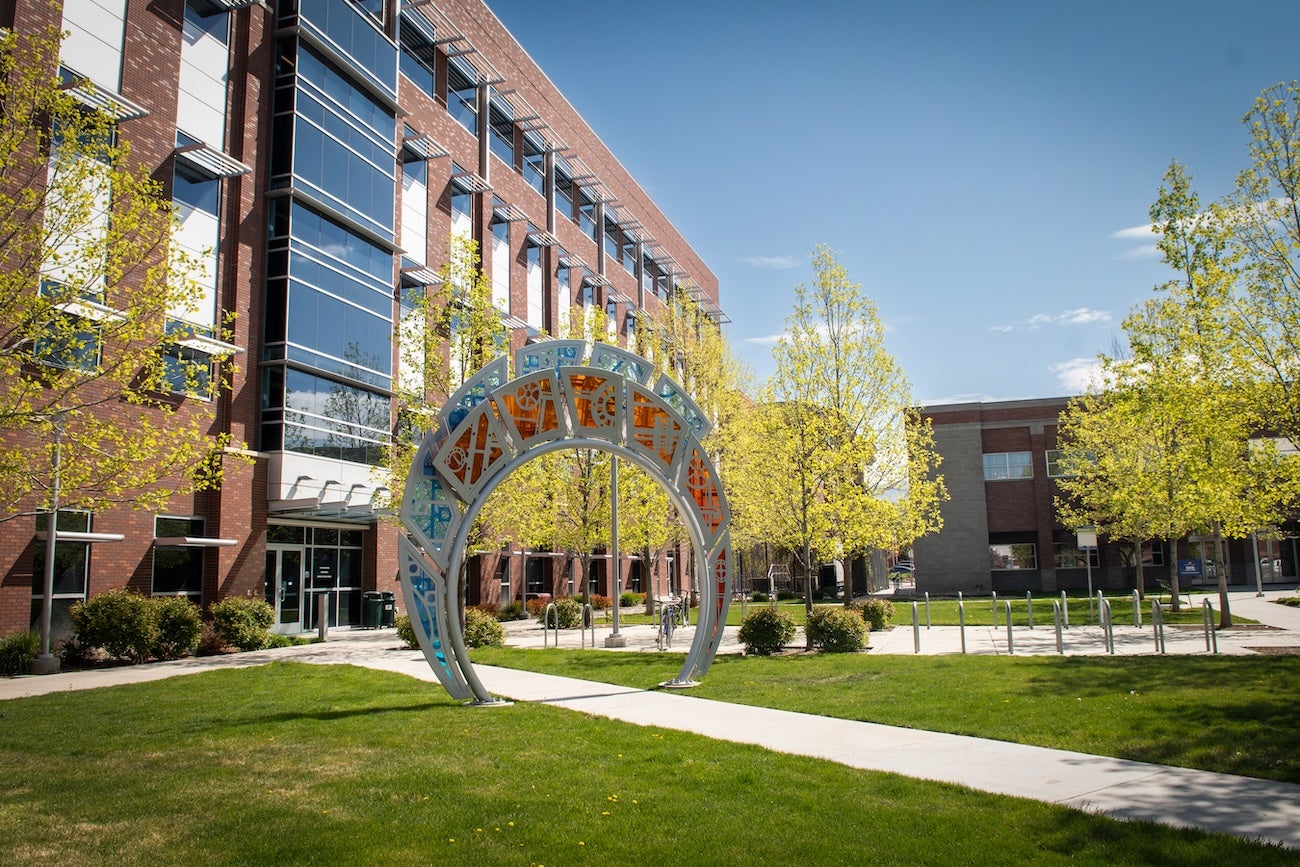Boise State’s connection to the city’s geothermal system provides a powerful, sustainable energy source. The university is a model for other forward-looking institutions
By Brianne Phillips

You may not have soaked in one of Idaho’s hot springs (yet), but if you’ve visited government buildings, hotels or businesses in downtown Boise, or walked through buildings on Boise State’s campus on a wintry day, you’ve done the next best thing. You have enjoyed heated air and water whose source is a geothermal aquifer 3,200 feet below the Boise foothills.
The City of Boise’s geothermal system, from which Boise State benefits, is unique and of national interest. Unlike more common geothermal heat pumps that use the near constant temperature of the Earth’s crust to cool and heat buildings, this system is a geothermal direct use technology where heat is pulled from the water, as opposed to being used to generate electricity. Water from the Boise system is 177 degrees Fahrenheit. To put this into perspective, it would only need another 35 degrees to boil.
Boise State champions this renewable form of energy, one that plays a significant role in the university’s sustainability goals.
In 2013, thanks to a grant from the Department of Energy and the Department of Housing and Urban Development, Boise State connected to the City of Boise geothermal district. So far, 11 buildings have joined the system, including the Administration Building, the Micron Business and Economics and the Center for Visual Arts.
“This is a pretty unique system,” said Brian Emtman, Boise State’s director of energy and utilities. “The water reaches campus at a high temperature that allows us to use that heat directly for heating our buildings, and in some cases, use the residual heat to do sidewalk snow melt.”
A geothermal past, present and future
“For centuries, Native Americans used this area below Table Rock (a well-known peak in Boise’s East End) as a place for wintering, cooking and bathing,” said Jon Gunnerson, geothermal coordinator for the City of Boise. “There were dozens of natural artesian hot springs in this area. Even now, if we get a little bit of snowfall you’ll notice that no snow sticks in this area below Table Rock. The ground is substantially warmer.”
Boise’s geothermal heating system began in the 1890s when businessmen began drilling artesian hot water wells. As a result, Boise is home to the world’s first direct-use geothermal district heating system that runs along Warm Springs Avenue. This international “first” is still in operation 130 years later and heats about 350 buildings.
Today, four sustainable district heating systems provide heat to over eight million square feet of residential, business and governmental space in Boise. Gunnerson said frequent monitoring of the hot water aquifer reveals that the rate of water withdrawal is less than the rate at which the aquifer needs to refill itself, indicating a healthy system.
In 2022, Boise State’s buildings used over 200,000 *therms of heat from the city’s geothermal system. By relying on geothermal heat, the university cut the amount of natural gas it would have otherwise used, an amount equal to the annual consumption of roughly 300 average Idaho homes.
*One “therm” is equivalent to 100,000 British thermal units or BTUs. The BTU is a traditional unit of heat – the amount of heat required to raise the temperature of one pound of water by one degree Fahrenheit.
Boise State alum champions geothermal
During his time as a doctoral student at Boise State, Bryant Jones (Ph.D., public policy, 2023) studied how and why some energy technologies scale and commercialize – think hydroelectric power in the 1920s, nuclear power in the 1960s and 1970s – while others stagnate. Unfortunately, geothermal is in the latter category. It currently produces about 1% of the thermal heat used in the country and even less of its electricity. Jones believes it could be doing much more.
Upon graduating, Jones became the executive director of Geothermal Rising, a nonprofit organization dedicated to advocating for the advancement of geothermal energy as a clean, sustainable energy source. In the spring of 2023, Geothermal Rising received a $165 million grant from the U.S. Department of Energy to transition oil and gas technologies and workforce into the geothermal industry.
Jones said that according to research by academic institutions, national labs, the U.S. Department of Energy and other government agencies, there exists enough geothermal electricity generation potential in North America to power 16 million households. There is also significant thermal energy to supply heat and cooling for all North American homes, businesses, industry, manufacturing, and agriculture economic sectors, according to these studies. In addition to having the lowest environmental footprint of all energy technologies, including wind and solar, geothermal technologies use the same skills and knowledge of the oil and gas workforce.
Decarbonizing buildings with geothermal heating and cooling as well as transitioning dairy dairy pasteurization, pulp and paper processing and other industries away from fossil fuels would be significant for Idaho industry, Jones said. “This could save Idaho farmers, ranchers, business owners and electricity consumers real money. It’s an underutilized technology. It’s reliable, renewable and doesn’t produce any greenhouse gasses.”
Jones grew up in Sandpoint, Idaho. He sees geothermal energy as an opportunity to create jobs, advance clean technology and conserve the natural beauty of his home state.
“Geothermal is an everywhere technology and it’s also a ‘now’ technology. It’s mature, it’s proven. It can scale. It just needs policy support,” he said.